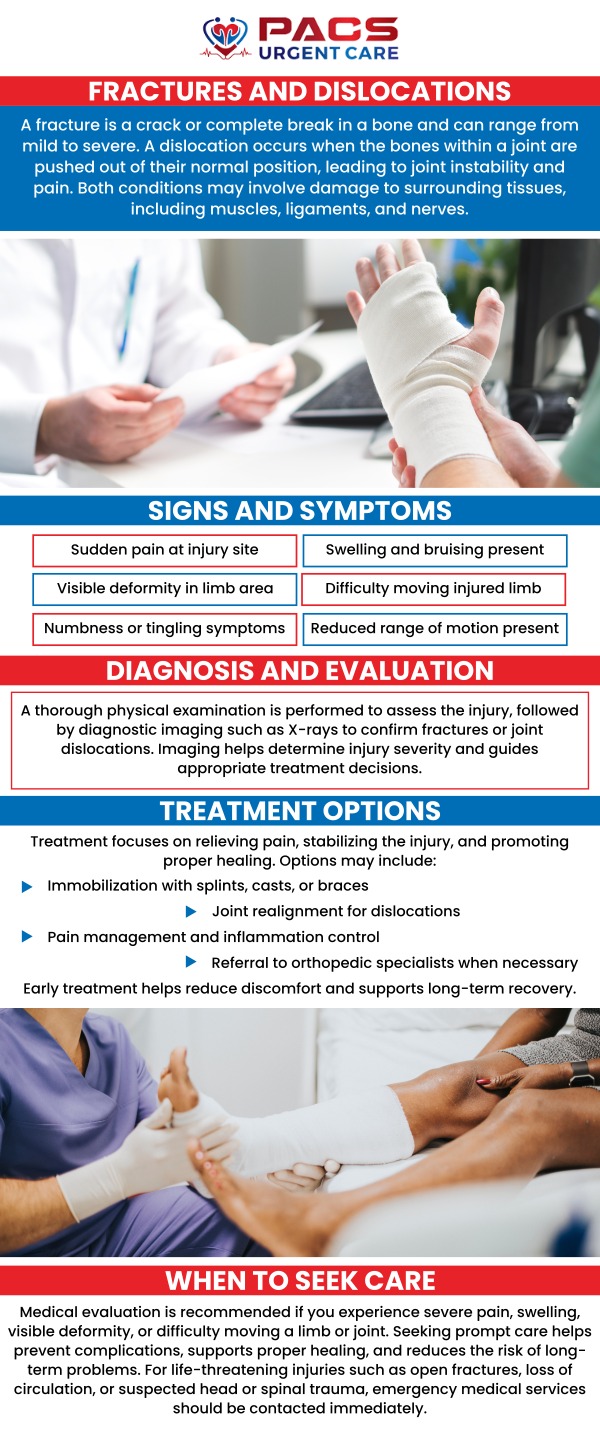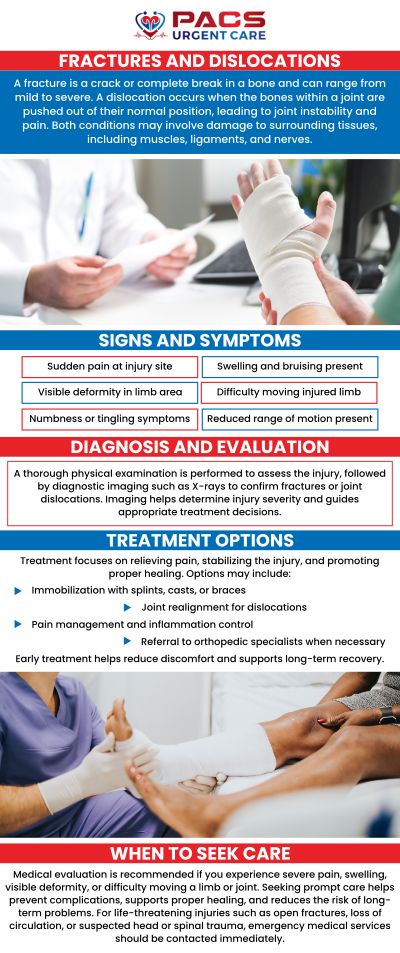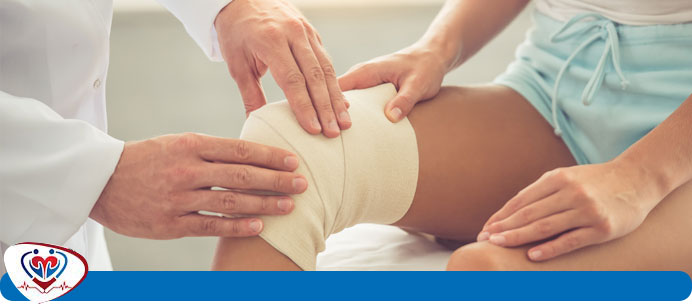Fractures and Dislocations Treatment Q&A
Dislocation and fracture are traumas caused by accidents and collisions. Common signs of a fracture and dislocation include noticeable deformity, joint displacement, swelling, acute pain, joint inability to move, and difficulty using or moving the damaged area. If you have bruising or swelling or cannot move because of an injury, visit our medical professionals, Dr. Khaled Said MD, and Dr. Walid Hammad at Premier Acute Care Services. For more information, contact us today or online check-in. We have convenient locations to serve you in Alexandria VA, and Ruther Glen VA!




Table of Contents:
What is the difference between fractures & dislocations?
What are the symptoms of fractures & dislocations?
What are the risk factors for fractures & dislocations?
When to see PACS Urgent Care for fractures & dislocations?
Fractures and dislocations are common injuries that can occur in the extremities, such as fractures of the tibia and fibula, and dislocations of the shoulder, hip, and other joints. Fractures are typically caused by a fall onto an out-of-line bone, while dislocations are most commonly caused by sudden movements, such as when a person falls from a height. Injuries to the extremities can be life-threatening and require immediate medical attention.
Fractures are breaks in the bone that can be caused by a lot of different things, including falls, sports injuries, or even just everyday activities like moving furniture. Dislocations are breaks in the joint where the bone and the joint capsule come together. They can be caused by a lot of different things, too, like physical trauma, overextension of a joint, or improperly performing an exercise. When fractures and dislocations happen, they can cause pain and difficulty moving the affected area.
A bone fracture describes a crack or a partial or complete break in the bone; this can be further classified into several categories, including compound fractures or open fractures, which are fractures that result in bone fragments that penetrate the surface of the skin. A dislocation occurs when two bones are out of place at the joint that connects them, which may also cause injury to nerves and blood vessels.
Symptoms of fractures or dislocations are similar and may include:
• Tenderness
• Swelling
• Deformity
• Discoloration
• Limited mobility/range of motion
• Loss of sensation
A person may be unable to move a limb or joint, depending on the severity or location of the fracture or dislocation. Nerve damage and/or blood vessel injury may result in a loss of sensation below the fracture or dislocation. If a fractured bone pierces the skin, bleeding can occur; the amount of blood loss is dependent upon the size of the wound, the area of the break, and other factors.
There are several risk factors for fractures and dislocations that increase the chance of sustaining either one of these injuries. The main risk factors are:
• Age — The older population is at much higher risk for fractures than younger adults; 50 percent of women over the age of 50 will experience a break, and 25 percent of men over age 50 will have a fracture in their lifetime.
• Gender — Women are far more likely to have a fracture than men due to the difference in anatomy; men, in general, have denser bones than women. In fact, the prevalence of fractures in the female population is so great, that one in two women over the age of 50 will have a fracture in her lifetime. In addition to this, because of the loss of estrogen at menopause, women lose more bone density than men as they age.
• Smoking — Because of its impact on hormone levels, smoking is a risk factor for fractures. Smoking was tagged as a risk factor for bone loss more than 20 years ago, and research has since proven that women who smoke generally go through menopause at an earlier age.
Other risk factors include:
• Alcohol
• Steroids
• Rheumatoid Arthritis
• Diabetes
• Previous Fracture
• Family History
Other Chronic Disorders, such as:
• Celiac disease
• Crohn’s disease
• Ulcerative colitis
• Inflammatory bowel disease
If you are experiencing any signs or symptoms of a fracture or dislocation, it is imperative to receive immediate medical attention. Please come to PACS Urgent Care; we can see you without an appointment, do not hesitate to come straight to our clinic, located at 11073 Colonel Armistead Drive Suite 105 Ruther Glen, VA; and 3481 N. Beauregard Street, Alexandria, VA 22302.
Come to PACS Urgent Care for professional fracture and dislocation treatment. Contact us today to book an appointment with our sprains and strains treatment specialist, or visit one of our two Virginia clinics; we have one in Ruther glen VA, and one in Alexandria VA. We serve patients from Alexandria VA, Huntington VA, Arlington VA, Ruther Glen VA, Bagdad VA, Athens VA, Doswell VA, and surrounding areas.
Check Out Our 5 Star Reviews





